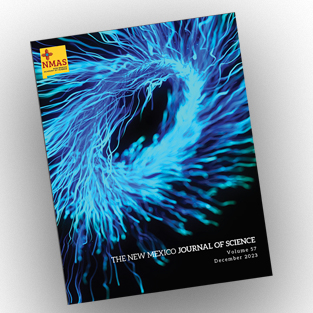NEWS
Developing Effective Communication Techniques: An Innovation Working Group

Earlier this month, I attended an EPSCoR-funded Innovation Working Group (IWG), spearheaded by our very own Dr. Mike Heagy. IWGs provide a venue for researchers, educators, and nationally recognized experts to address grand challenges that require an interdisciplinary approach to transform science. You can learn more about them in the education section of our website.
Mike is co-lead of our Solar Energy team; he and his team are studying how to make photovoltaic cells cheaper and more efficient through chemistry and physics. Mike and his students have run into problems when trying to communicate the science behind what they are working on. At the graduate level and above, the chemistry behind Mike's work becomes very hard to explain and as a result, can become confusing to the public, new students, and even potential funding sources. In order to properly assess the problems and find a better way of communicating his work, Mike applied for and received EPSCoR funding to run an IWG: "Developing Effective Communication Techniques to Relate Graduate Level Research toward Informal Educational Audiences and Improving Workforce Development Understanding."
The IWG took place on October 21–22 at New Mexico Tech. Faculty, grad students, and workforce development leaders attended, and over the two-day period discussed how and why educational videos and graphic design play an important role in not only communicating science, but engaging audiences and encouraging them to want to learn more. Austin Madrid, co-founder of Jak Media helped lead and guide our discussions. Jak Media provides photography and cinematography services, and maintains that they "don't make the product, we make the packaging. Our mission is to utilize our unique style, uncompromising integrity, and passion for collaboration to shape the stories of our clients into vehicles for furthering their cause and life's passion." On the first day, Austin brought some of that passion into the meeting by sharing examples of his work and other examples of successful videos and communication techniques. Each attendee also provided an example of a science video or graphic used to communicate a certain message and technique. With Austin's help, we discussed what makes communication successful, and how to utilize those techniques. One of the most important idea to keep in mind is to always have a story to tell, and keep that story in the context of what you are trying to explain. In general, people respond better to stories and anecdotes than lectures.
On day two, after discussing potential questions to ask, we visited Dr. Mahinda Ranasinghe's lab on NM Tech's campus to record (using only a cell phone!) an interview conducted by NM Tech grad student Hanqing Pan. By combining the short interview with a voice over (also done on a cell phone amazingly well by Hanqing), videos borrowed from the internet to provide context (LASERS! CATS! LASER CATS!), and a little humor, Austin cobbled together a 3 minute video. While it wasn't exactly Oscar worthy, the finished product was a great way to show that with a cell phone camera, a computer, and a little effort, anyone can create a darn-good science video. I can't wait to help spread this message to the rest of the EPSCoR community!
At EPSCoR, we want to make sure the research our faculty and students work on is communicated in an engaging way to a large audience. If you're interested in helping, please email us at nwilloughby@epscor.unm.edu!

